A complete guide to tofu for beginners! This versatile ingredient is a staple in vegan and plant based cooking, and makes a delicious addition to countless recipes when prepared correctly. Learn all about the different varieties of tofu, how to cook tofu, and how to make tofu taste good in just a few simple steps.
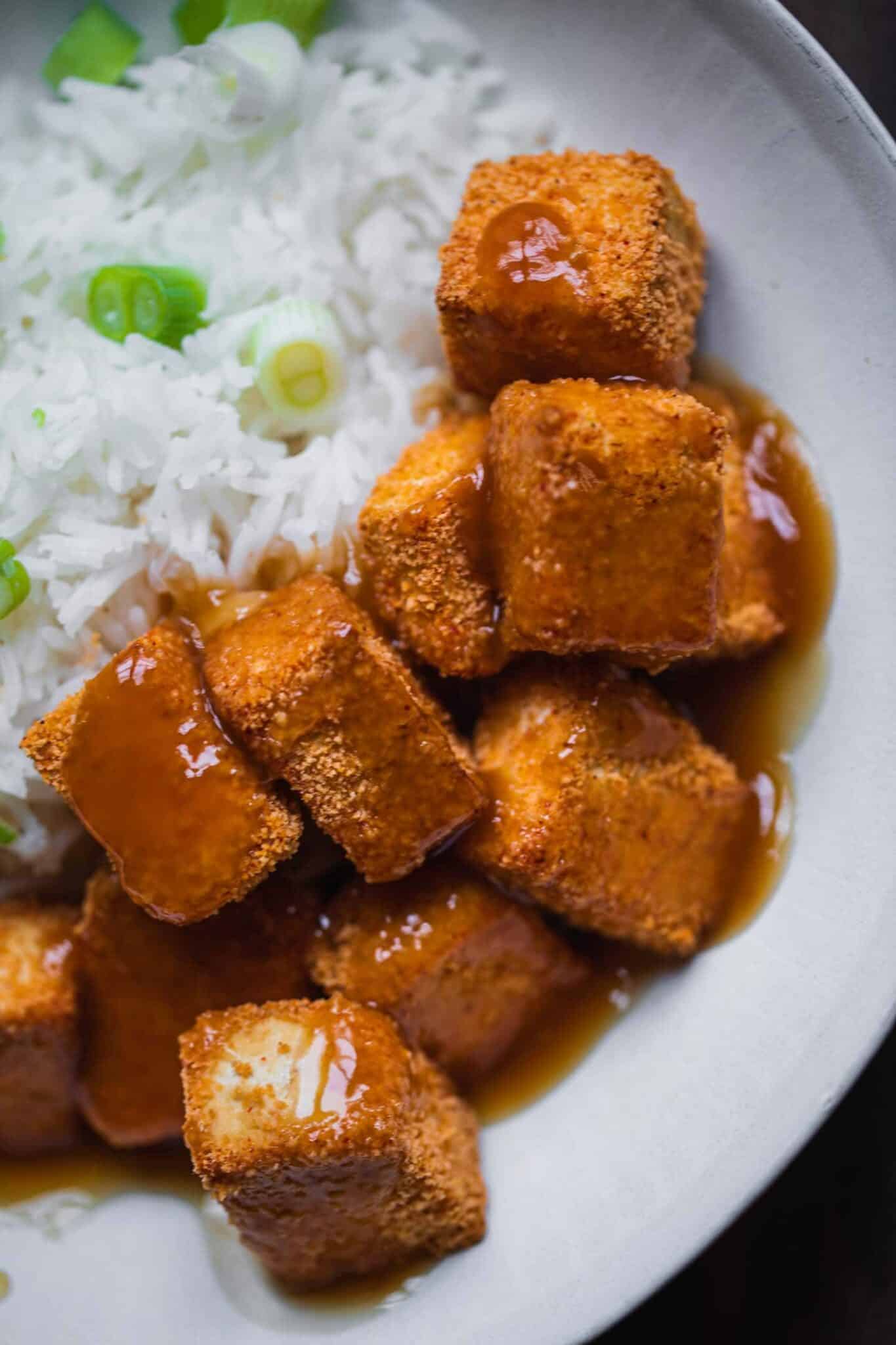
Jump to:
Tofu is, without doubt, one of my favorite ingredients. I learned about it pretty quickly when I first got into cooking vegan meals, and it continues to make an appearance at my dinner table multiple times a week. From very simple baked tofu to a more complicated recipe, it’s super versatile. You just can’t go wrong with it!
However, if you’re a beginner in the kitchen, you may feel a little bit intimidated. By itself, tofu is a blank canvas. This has both benefits and drawbacks.
On the one hand, you can do so much with it as the flavor is so neutral! But when prepared incorrectly, it can taste bland and acquire a soggy texture. So, it’s a good idea to learn as much as you can about tofu so that you know exactly how to make it taste good.
In this post, I tell you everything you need to know about tofu. I’ll talk you through the different tofu varieties that are out there, and what you can do with them.
I’ll also share my top tips for cooking tofu, covering the most common tofu cooking mistakes. Along the way, I’ll be sharing my favorite tofu recipes that are guaranteed to impress anyone, even self-proclaimed tofu haters!
What is tofu?
Tofu is an ingredient that is made out of soybeans. The soy beans are turned into soy milk, and the soy milk is then curdled, and then pressed into solid white blocks.
This process originated in China, and is quite similar to making cheese. It’s a staple ingredient in vegan cooking because it’s a great alternative to meat and cheese in many popular dishes.
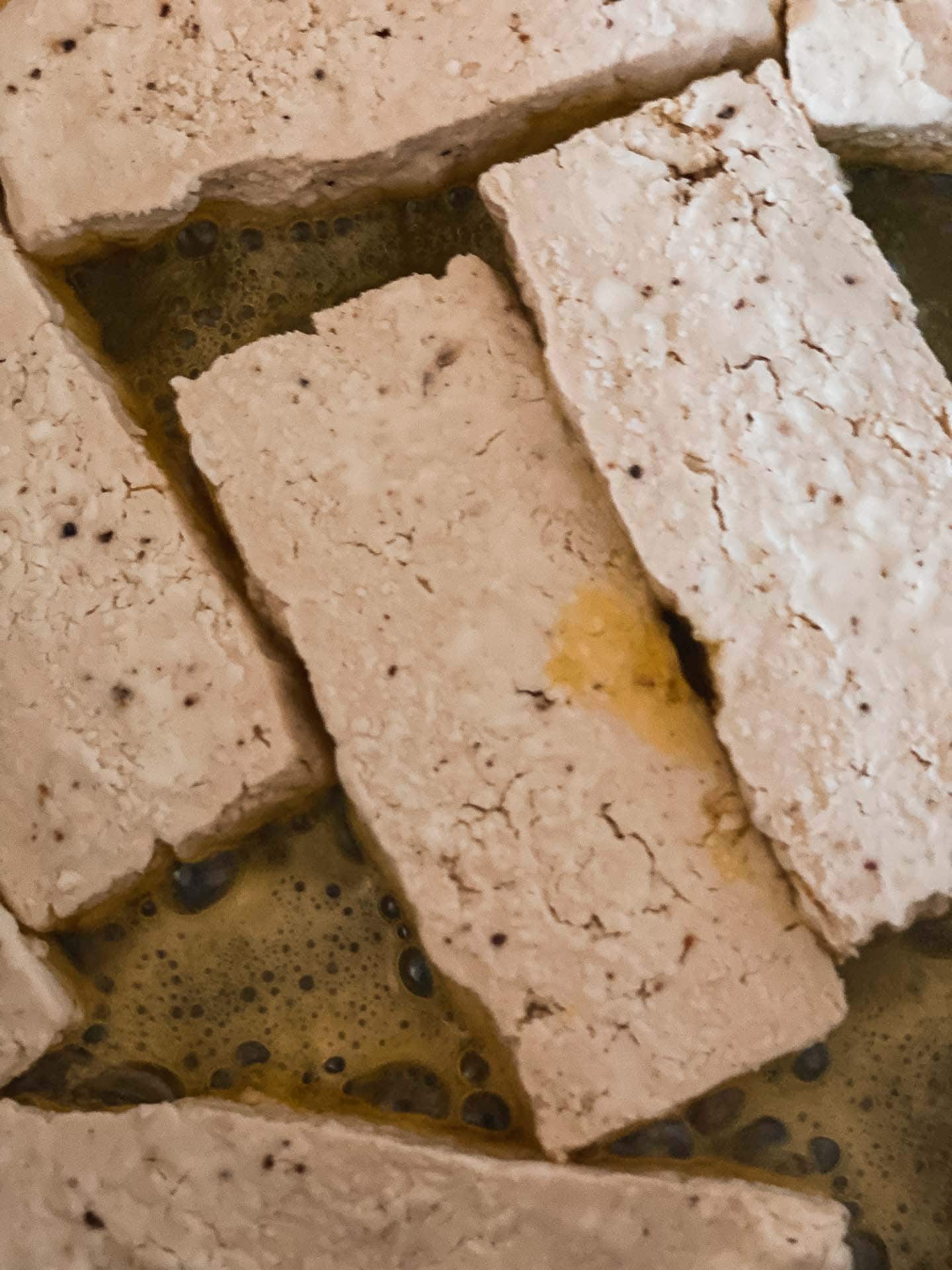
As mentioned, the flavor of tofu on its own is quite bland, almost watery. But there are countless methods and flavor options which can really make it exceptional.
Looking for new ways to cook with tofu? Be sure to check out my full collection of vegan tofu and tempeh recipes!
How to Press Tofu
A lot of recipes will call for you to press tofu. This is a step that’s required to achieve a chewy, meaty texture and to allow the tofu to absorb as much flavor as possible.
But keep in mind that pressing tofu isn’t always necessary. For instance, silken tofu is too soft to press, and the high water content is exactly what makes it unique. A lot of extra firm tofu varieties also come pre-pressed. Check individual packaging and if there is very minimal water, it usually isn’t necessary to press it further.
These are two main ways you can press tofu. These are:
Using a tofu press. This is the easiest method to press tofu. Tofu presses can be purchased online, and are typically rather inexpensive. (I like this one!)
Using heavy objects and paper towels. Even without a tofu press, it’s very easy to press tofu. Simply lay the block of tofu on a chopping board and cover it with a few sheets of kitchen towel. Place a large saucepan on top of it, and then place more heavy objects inside the saucepan, such as a few cans of beans.
A good rule of thumb is to press tofu for around 30 minutes. This will get rid of excessive moisture, without leading to tofu that turns out dry when cooked.
Tofu Varieties
When you go into a store, you may notice that there are multiple tofu varieties on sale. Knowing which one to use for a given recipe is the key to successfully cooking with tofu.
Although there are countless tofu varieties available, I will go through the main ones you should learn about and bring into your kitchen!
Silken Tofu
When silken tofu is made, it isn’t curdled and the tofu is left unpressed, meaning it retains all of its water content. This results in a very soft, silky texture. This tofu variety falls apart very easily and doesn’t hold shape as well as the other, firmer tofu varieties.
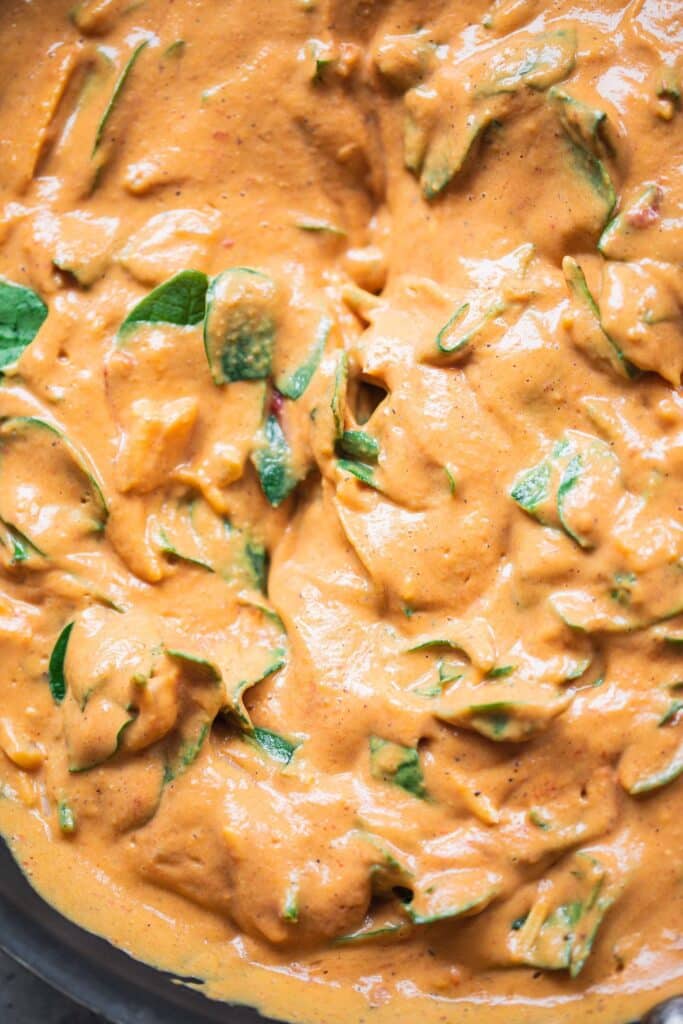
How to Cook Silken Tofu
One of the great things about silken tofu is that you can eat it raw, straight out of the container with a sauce of your choice! Any tofu variety can be eaten raw.
Silken tofu, however, has a subtle sweet flavor which makes it the best option for doing so. It’s great for a snack or appetizer that takes literally seconds to prepare!
Aside from that, silken tofu is the best tofu variety for blending. It adds a smooth, creamy textures to sauces and meals such as soups and stews.
You can also sweeten silken tofu and turn it into a smoothie to enjoy for breakfast.
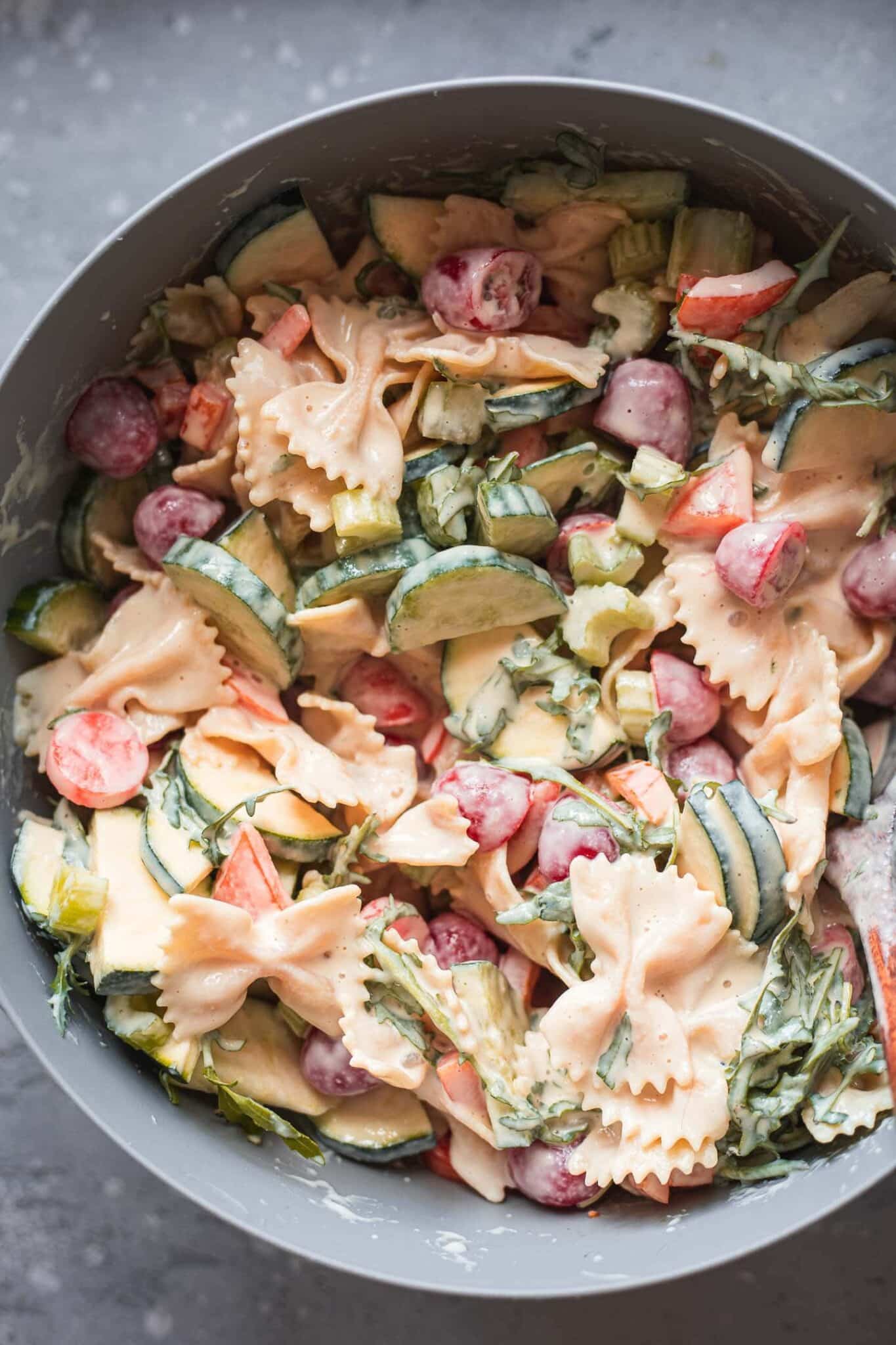
Silken tofu recipes to try:
My creamy pasta salad, which uses silken tofu to make a smooth, silky salad dressing.
Silken tofu is a secret ingredient for spinach artichoke dip, which is guaranteed to impress anyone. And this sun dried tomato dip is another reader favorite!
You can also use silken tofu to make pasta sauces! The flavor is very neutral, so it takes on the profile of the other ingredients you add. For instance, make butternut squash pasta for a cozy dinner, or garlic tahini pasta that’s ready in just 15 minutes.
Medium/Firm Tofu
This is the most common tofu variety you will find in most supermarkets. It usually requires pressing in order to get rid of excess moisture for the best results.
Use it in recipes where it isn’t necessary for the tofu to hold its shape perfectly, and where you’d prefer a fluffier texture if the tofu is to be cubed.
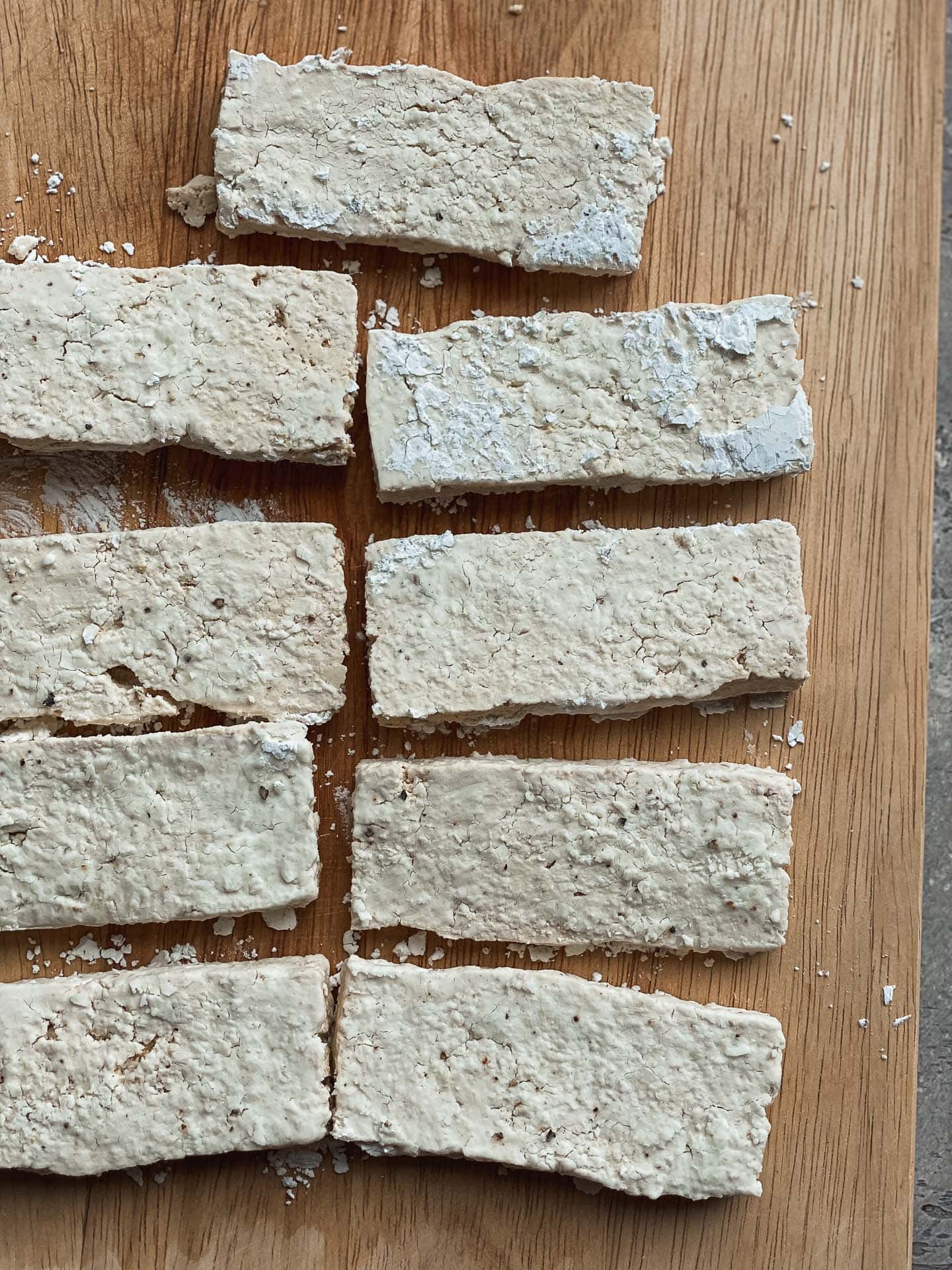
How to Cook Medium/Firm tofu
Medium/firm tofu works great in recipes where the tofu needs crumbling or baking. It adds a great texture and crumbling it makes a great alternative to meat due to the chewy texture.
For instance, you can try recipes such as:
Vegetable buns with tofu. These are a vegan alternative to Sheng Jian Bao, where the tofu acts as a replacement for pork.
Firm tofu works well crumbled up in this tasty Southwestern Tofu Scramble.
You can also crumble extra firm tofu to act as a meat replacement in pasta sauces such as smoky tofu eggplant pasta that’s similar to bolognese.
Medium firm tofu is the best tofu variety for making air fryer tofu because I find that putting extra firm tofu in the air fryer dries it out too much.
You can also add it to stir-fries featuring either noodles or rice. Try out tofu noodles with asparagus for a delicious way to use crumbled tofu.
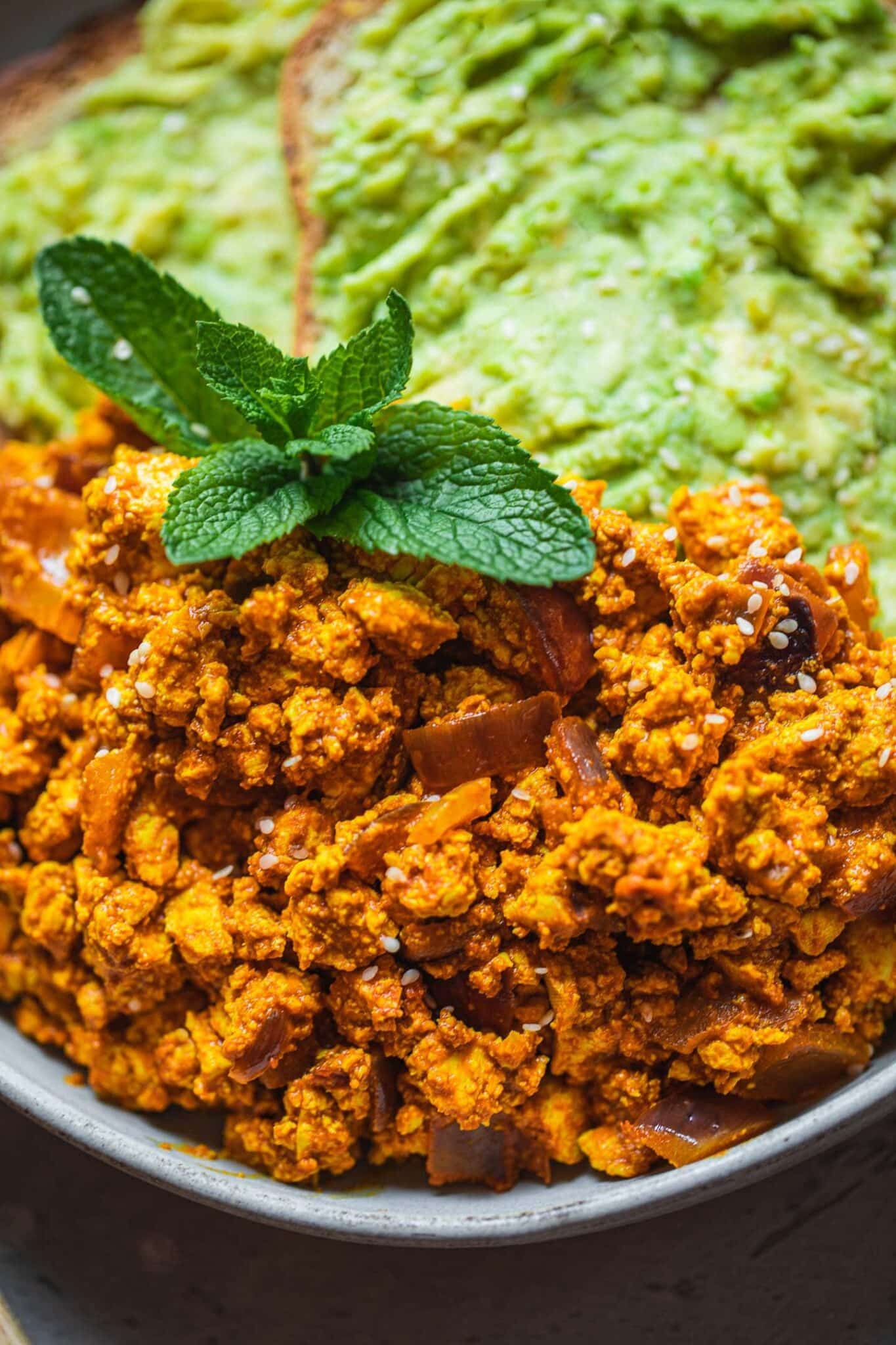
The texture has the perfect amount of firmness to replicate that of egg. You can therefore use firm tofu in vegan breakfast recipes such as vegan ‘egg’ muffins where the tofu is used together with chickpea flour to create an ‘eggy’ flavor.
It’s also the best option for making scrambled tofu, leading to a scramble which is fluffy and airy.
Extra Firm Tofu
This is my personal favorite tofu variety because the texture is so hearty and chewy. It has the lowest water content, and usually doesn’t require pressing. It’s very firm and spongy to the touch, and won’t fall apart when handled.
How to cook extra firm tofu
Use extra firm tofu in any recipes where you want the tofu to have a chewy and firm texture. It’s also ideal in any dishes where it needs to hold its shape well. For instance, it’s the best varieties for tofu curries and stews.
Extra firm tofu is the best tofu variety for frying or baking because it becomes super crispy on the outside. And as long as you don’t overbook it, it retains a spongy and meaty texture on the inside. Before using either of these techniques, I would recommend marinading the tofu to maximize flavor.
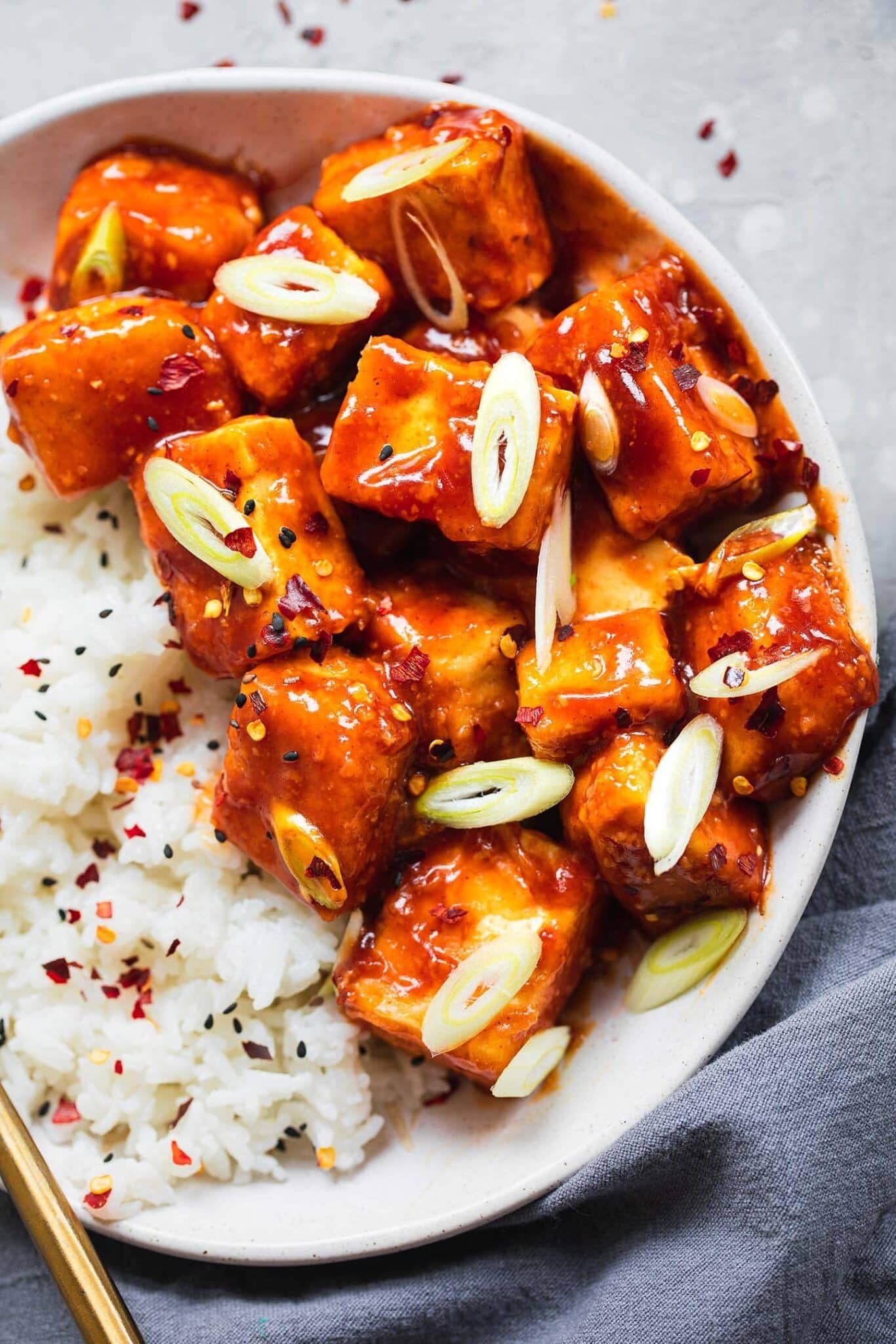
After this, you can:
BAKE: Start by preheating the oven to 180 degrees C/350 F. Line a large baking tray with parchment paper, and arrange the tofu cubes in a single layer, making sure not to overcrowd. Bake for 25 minutes, flipping the tofu cubes half way through. Then, add a sauce of your choice! For instance, baked BBQ tofu always makes an impressive weeknight dinner.
FRY: Before frying, you can coat the tofu cubes in cornstarch for extra crispiness. Heat a thin layer of oil in a skillet or frying pan over a medium-high heat. When the oil is hot, add the tofu cubes and cook them for around 10-15 minutes, rotating frequently to ensure that they’re evenly browned on all sides. You can then use this to make sweet and sour tofu.
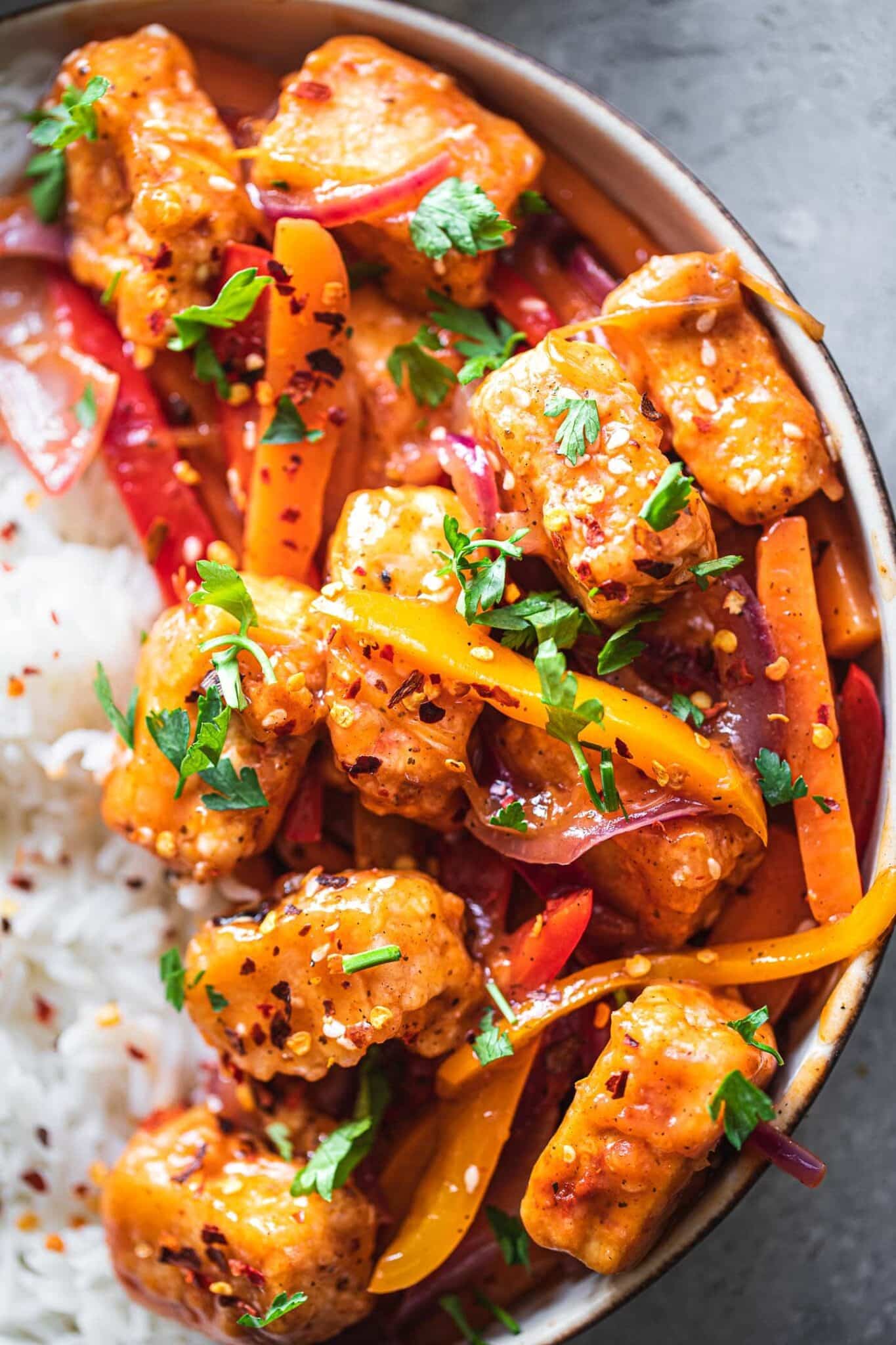
Did you know? Extra firm tofu is the easiest variety to make crispy! Be sure to read my guide on how to make crispy tofu (either baked or fried). Crispy tofu is a great alternative to croutons that can be added to salads or soups.
If you want to make a tofu dish that’s guaranteed to impress even a fussy eater, use extra firm tofu! For instance, when sliced into thick slabs, you can use it to make tofu steaks with a glaze or sauce of your choice.
Making Tofu Taste Good - My Top Tips!
In order to avoid sad, flavorless tofu, there are a few simple tips you can implement. Even as a beginner, you can make tofu taste good and even get it to restaurant quality!
Marinate the tofu
One of the keys to making firm or extra firm tofu taste good is a good marinade. This can be incredibly simple. For instance, you can mix together some soy sauce, rice vinegar, minced garlic and maple syrup/coconut sugar for a hint of sweetness. Combine with tofu cubes, and leave to marinade for at least 30 minutes, but overnight in the fridge achieves the best results.
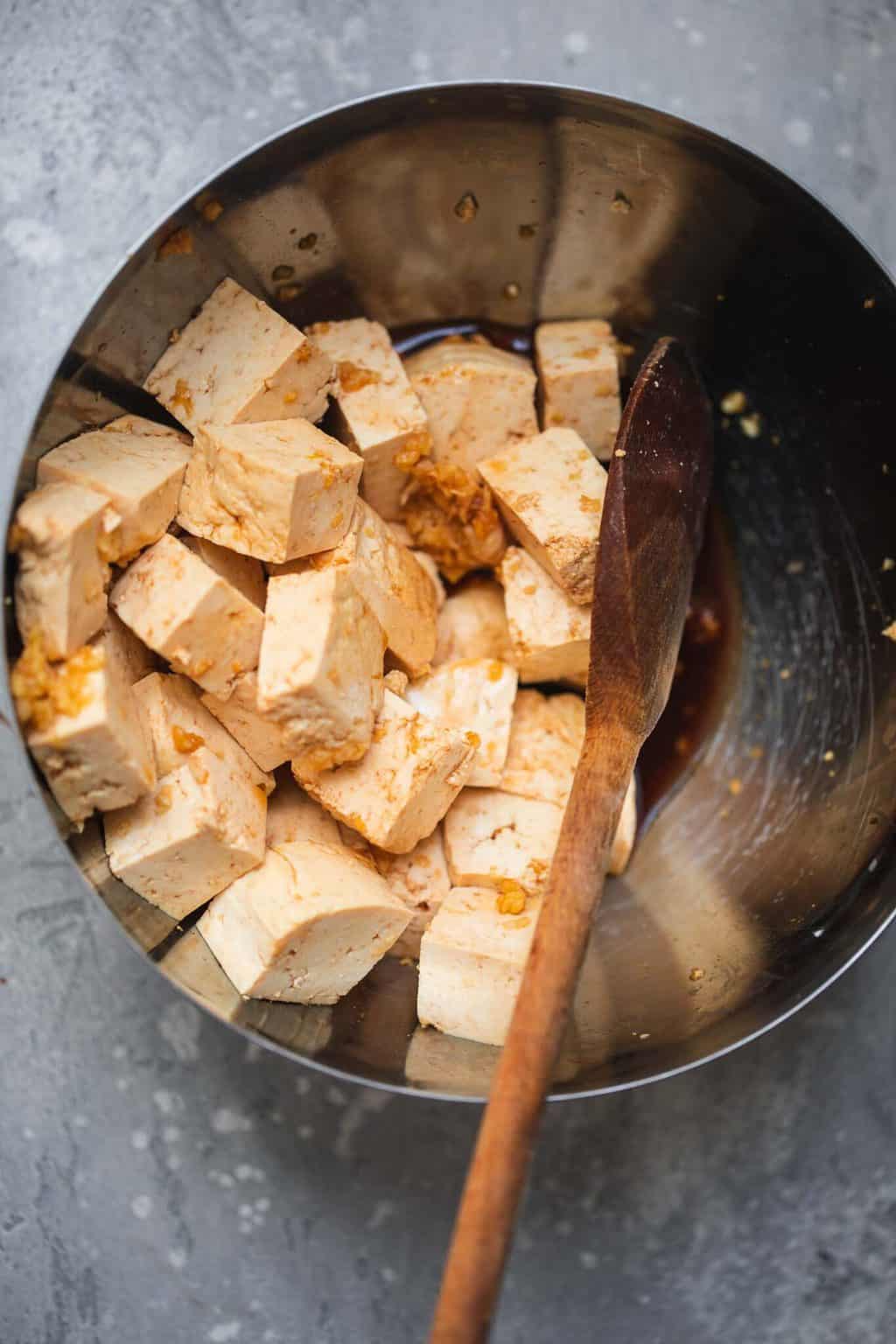
Avoid using oil in the marinade! The tofu won’t absorb this well, and you’ll end up with a slimy texture. Instead, focus on your favorite sauces and condiments to create a flavor of your choice. Add sriracha for spice, and lemon juice if you like citrusy flavors. For a great hint of umami, add miso paste to your marinade.
There’s not even a need to be super precise with the ingredients – any of the marinade that the tofu hasn’t soaked up can be used as a sauce.
Freeze Tofu
Ever wanted to give your tofu that spongy, chewy texture you often find at restaurants? Freezing the tofu before use is a fantastic way to do so. When thawed, frozen tofu will also absorb more flavor when you marinade it.
To freeze tofu, simply drain the tofu and place it in a freezer-friendly container or bag. Freeze for around 8 hours, then allow to thaw fully before using as desired.
Grate tofu to make flaky ‘salmon’!
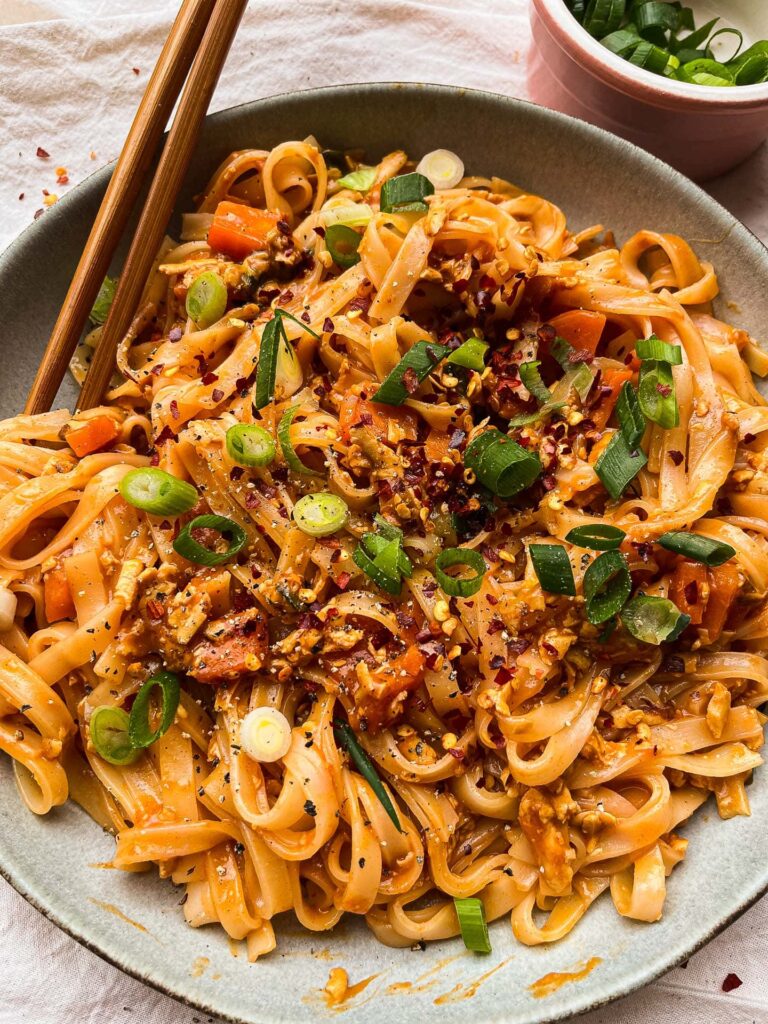
Yes, you can grate tofu! Use the large side of the grater to make tofu ‘flakes’ that will resemble the texture of flaky salmon. You can then go ahead an add it to stir-fries, salads and pasta/noodle dishes of your choice.
Grated tofu also absorbs flavor incredibly well, and crisps up to perfection when pan fried.
Use cornstarch to make crispy tofu.
Crispy tofu always tastes incredible either in a recipe, or by itself with a sauce of your choice as a snack. Cornstarch is often a ‘secret’ ingredient that adds an extra layer of crispiness to tofu. You can either cube or crumble the tofu, and then mix with cornstarch.
An easy way to do this is by adding the cornstarch to a ziplock bag together with any other seasonings, followed by the tofu. Now shake the bag until the tofu is thoroughly coated.
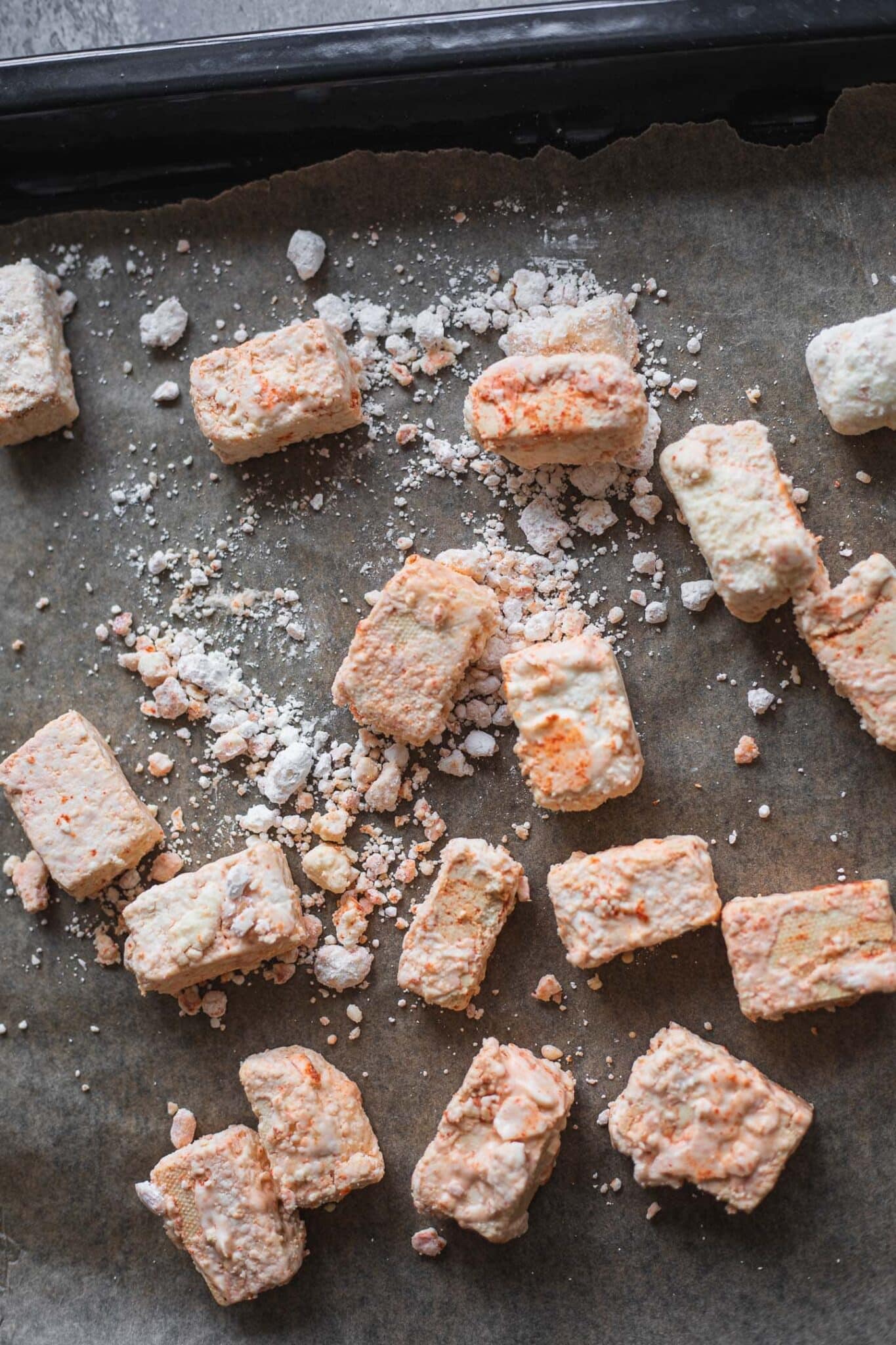
Storing Leftover Tofu
Leftover tofu can last in the fridge for 3-4 days. Fill an airtight container around halfway with water, then place the tofu inside and store.
If you’re not going to consume the tofu within this timeframe, I would recommend freezing it.


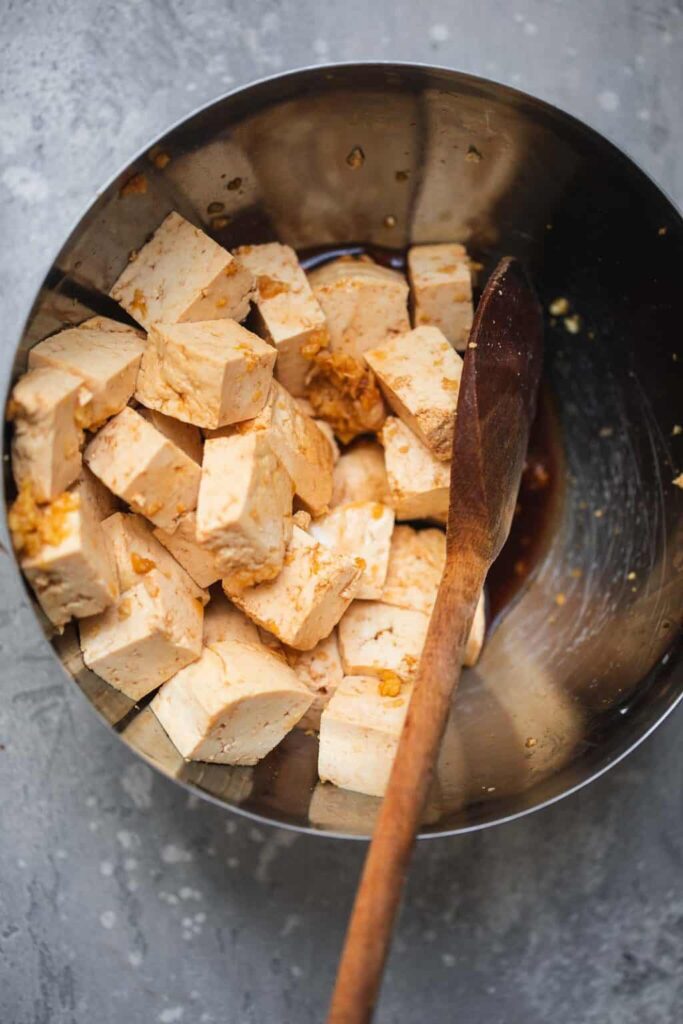




Joe says
I'm a couch vegan, or whatever version of veg. Anyway, came across your blog while surfing. I have had this on the back of my mind for a long time. And, I enjoyed it greatly. I will be using this as a guide when I venture into tofu. I have it saved. I will also be buying one of the presses through your link. For what its worth, I really enjoyed the article and am happy I found it.
Joe